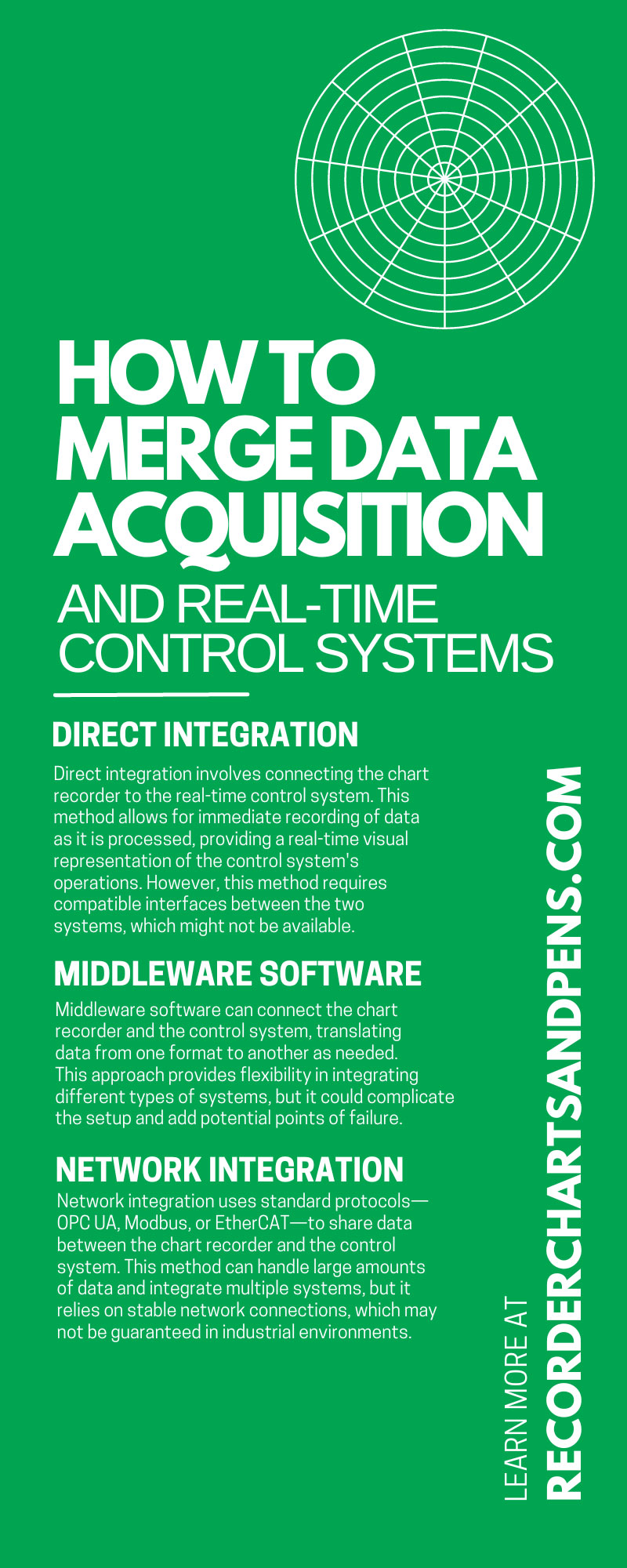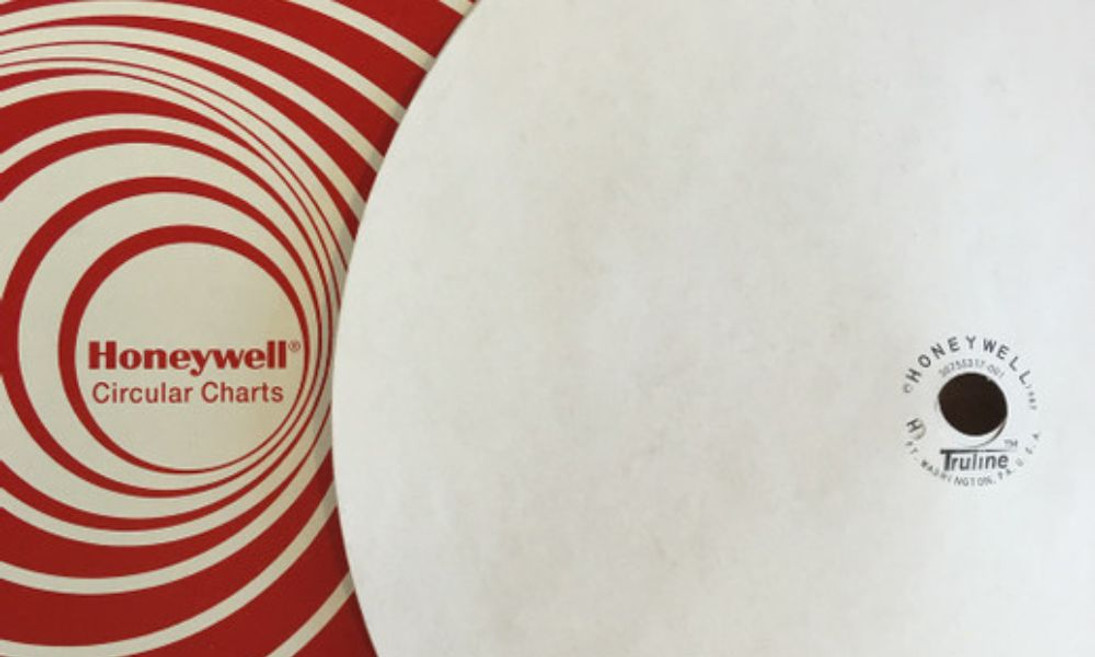15th Aug 2023
How To Merge Data Acquisition and Real-Time Control Systems
Chart recorders, a mainstay in many modern industries, capture data over time. These devices employ a physical mechanism to record and plot data points on a chart, providing a visual representation of variables like temperature, pressure, or flow rate. Chart recorders are essential tools in various sectors, including manufacturing, healthcare, and energy. They assist in monitoring equipment, tracking production processes, and ensuring regulatory compliance.
Data acquisition and real-time control systems are two integral components of industrial operations. Data acquisition systems (DAS) collect, analyze, and store information from multiple sensors, offering insights into the performance of machines and processes. On the other hand, real-time control systems (RTCS) allow operators to manage and direct processes based on the collected data, enabling immediate responses to any changes or anomalies.
These two systems often operate separately in many industries, which can lead to inefficiencies and missed opportunities. By integrating these systems, companies can streamline operations and bolster productivity. Read on and learn how to merge data acquisition and real-time control systems.
The Challenges
You may encounter challenges when separatingDAS and RTCS. The first challenge relates to data synchronization. Data acquisition and real-time control systems are typically unsynchronized when they operate independently, delaying data processing and responses. Another challenge is the potential for data silos. Data that is stored separately by different units within an organization is difficult to share and analyze. Data silos hinder the system's efficiency and can lead to missed opportunities for process optimization.
The third challenge relates to the system's availability and security. Real-time control systems require a stricter operational environment than traditional information systems. Downtime or security breaches could negatively impact the system's functionality.
If the bandwidth and conversion processes of digital control loops are insufficient, they could affect the control of the instrument, leading to inaccuracies. Thankfully, you can avoid these challenges by merging DAS and RTCS!
Integrating DAS and RTCS
Now that you understand the challenges your business might face when separating DAS and RTCS, we can explore the steps for merging the two systems.
Step 1: Audit Your Current System
Before merging your data acquisition system and real-time control system, you’ll need a complete understanding of their current state. Start by evaluating their functionalities, strengths, and weaknesses. Consider system reliability, data accuracy, processing speed, user-friendliness, and security measures. This comprehensive audit will provide a clear picture of what you need to improve or maintain within your integrated system.
Step 2: Identify System Requirements
Once you've audited your existing systems, use the findings to define the requirements for your new system. These requirements should be specific to your business. They might include desired features, performance levels, and any industry regulations the system must meet. Additionally, consider adaptability to ensure the system remains relevant as your business evolves.
Step 3: Determine Effective Solutions
After defining your system requirements, determine solutions that help you meet those needs. This could involve adopting a new system that integrates data acquisition and real-time control or modifying your existing systems for integration. Compare different solutions based on factors like cost, ease of integration, vendor support, and customer reviews.
Step 4: Implement and Merge
Once you've chosen a suitable solution, work with your internal team or an external consultant to implement the new system. This process may involve installing new hardware or software, integrating it with your existing infrastructure, and configuring it to meet your business needs. Follow best practices for system integration to minimize disruptions to your operations.
Step 5: Test Your Newly Merged System
After implementation, it's crucial to test the new system thoroughly. This involves checking if the system is functioning as expected and meeting all the defined requirements. Pay attention to how well the system handles data acquisition and real-time control tasks simultaneously. If any issues arise during testing, work with your team or vendor to make necessary adjustments.
Step 6: Train Your Staff
Finally, train your staff on how to use the new integrated system. This training should cover the technical aspects of operating the system and the business processes it will affect. Remember that a successful system integration is not just about technology; it’s also about the people using it. Ensure your team is confident and competent when using the new system.
Methods of Integration
You can integrate your chart recorder with a DAS through various methods, and they have unique advantages and drawbacks. The following methods are applicable for steps three and four of integrating DAS and RTCS.
Method 1: Direct Integration
Direct integration involves connecting the chart recorder to the real-time control system. This method allows for immediate recording of data as it is processed, providing a real-time visual representation of the control system's operations. However, this method requires compatible interfaces between the two systems, which might not be available.
Method 2: Middleware Software
Middleware software can connect the chart recorder and the control system, translating data from one format to another as needed. This approach provides flexibility in integrating different types of systems, but it could complicate the setup and add potential points of failure.
Method 3: Network Integration
Network integration uses standard protocols—OPC UA, Modbus, or EtherCAT—to share data between the chart recorder and the control system. This method can handle large amounts of data and integrate multiple systems, but it relies on stable network connections, which may not be guaranteed in industrial environments.
Each method offers different advantages and potential drawbacks. Your choice depends on the existing infrastructure, budget, personnel technical skills, and the operation's requirements.
Understanding how to merge data acquisition and real-time control systems is a significant step toward optimizing your business operations. The process might seem complex at first, but it's possible with careful planning, thorough auditing, and effective implementation. This integration can enhance your system’s functionality and improve your decision-making processes. Continuous monitoring, regular updates, and staff training can ensure your integrated system functions well for a long time.
Contact our friendly team at Recorder Charts & Pens for further support concerning DAS and RTCS! Our selection of helpful RTCS elements can enhance your business operations and work seamlessly within a fully merged system. Check out our Honeywell Truline chart recorder selection and related products to find the ideal equipment for your application.


